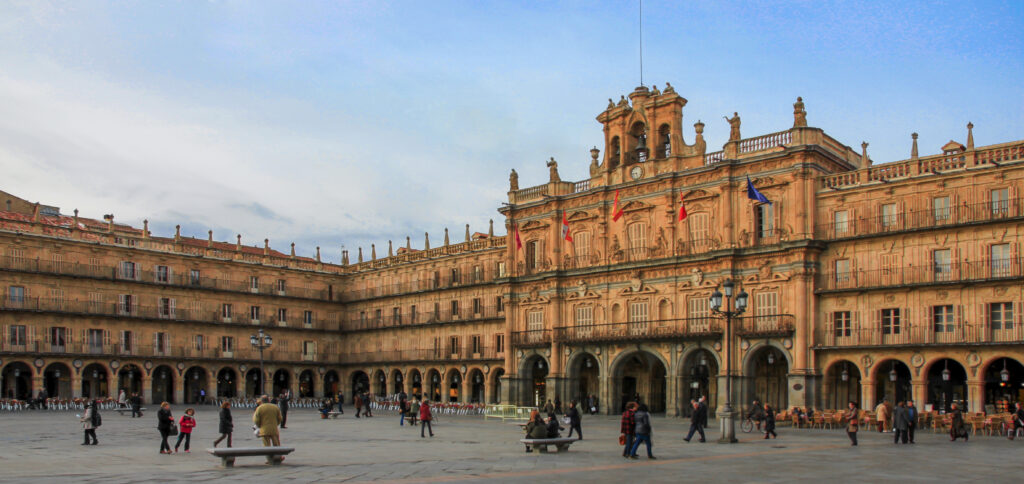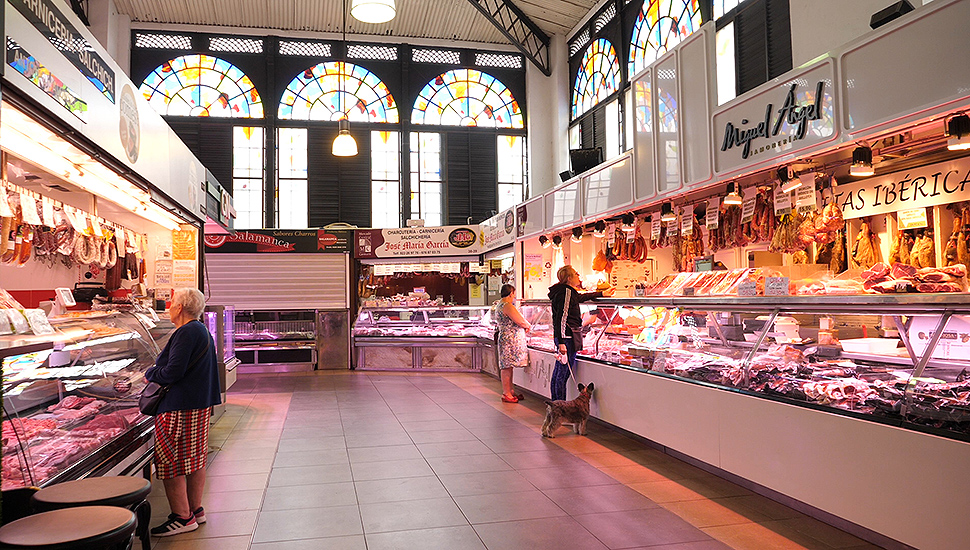The city of Salamanca is located in the Castilla y León region of eastern Spain. The city is very rich in terms of history and architecture, but it’s also young and dynamic thanks to all the students it welcomes every year at its university. It has been a UNESCO World Heritage Site since 1988. Here is our list of the 8 best things to do in Salamanca !
Plaza Mayor

In the heart of the old town, we find Salamanca’s famous Plaza Mayor. Considered one of the most beautiful squares in Spain, its buildings perfectly represent the Renaissance and Baroque styles. You’ll find 80 arches all around the square, with medallions representing kings, famous politicians of the time and poets. The sunset over the square is also something not to be missed, bringing out its architecture and color. This has also earned it the nickname ‘Golden City‘.
University of Salamanca

It is the oldest university still in operation in Spain, and the oldest in Europe alongside Oxford, the Sorbonne and Bologna. It was built in 1218 under the reign of Alfonso IX. Visit the famous 16th-century Plateresque facade with the eagle of Saint John in the main building, Escuelas Mayores. You can then discover the Patio de Escuelas, with its sculpture of a frog on a skull.
We organize a trip to Avila and Salamanca and we will visit many things of this list, so don’t hesitate !
🎟️Book your trip with us !🎟️
The old and new cathedrals

The old cathedral dates back to the 12th century Romanesque period. If you’re not afraid of heights, we recommend climbing the Torre del Gallo, a 110m-high tower offering impressive panoramic views. Take the original spiral staircase to the top. Inside the building, you’ll also find 50 15th-century paintings depicting biblical scenes. You can also see one of Europe’s oldest organs.
As for the new cathedral, it was built in the 16th century and blends Gothic and Baroque styles.
Casa de las conchas

Located next to the Plaza Mayor, this impressive house was built in 1493. It takes its name from all the shells on its façade, which in fact represent the Order of Santiago. The main courtyard is an excellent example of Elizabethan Gothic architecture, with Carrara marble columns and stone gargoyles on the walls.
Tapas in Barrio del Oeste

You’ll arrive in this district just outside the historic center. It was created in the years following the civil war, and is therefore fairly recent compared to the center. It was in the 2000s that the district really came back to life, thanks to a project by two women from the University of Fine Arts. Frescoes were painted on garage doors and in the streets, giving the area a new lease of life. Little by little, the area came back to life, and today boasts a multitude of stores and restaurants. The contradiction between the modernity of the district and the typical Spanish gastronomy of tapas adds an interesting touch.
Convento de San Esteban

Built in 1255, when the Dominicans settled on the site. The medieval buildings were renovated in the 16th century. The site has also witnessed the passing of such great names in history as Christopher Columbus, Saint Ignatius of Loyola and Saint Teresa of Jesus. Over the centuries, several elements have been added to the basic edifice, such as the cloister of the kings.
Parque de la Alamedilla

Located just outside the old town, this park is perfect for a summer picnic with family and friends. The central square features a fountain with water and light effects. The park also boasts an artificial lake where you can spot ducks and swans.
Mercado Central

This historic market dates back to the 19th century. You’ll find all the usual market staples, including fresh produce, but you’ll also find local and regional specialities such as charcuterie, cheeses and wines. You’ll also find tapas bars where you can sample the local tapas. The market is just 100m from Plaza Mayor.
If you’re in Salamanca or on vacation, be sure to visit these places, which are part of the city’s history and will help you learn more about it.
Follow us on Instagram !


